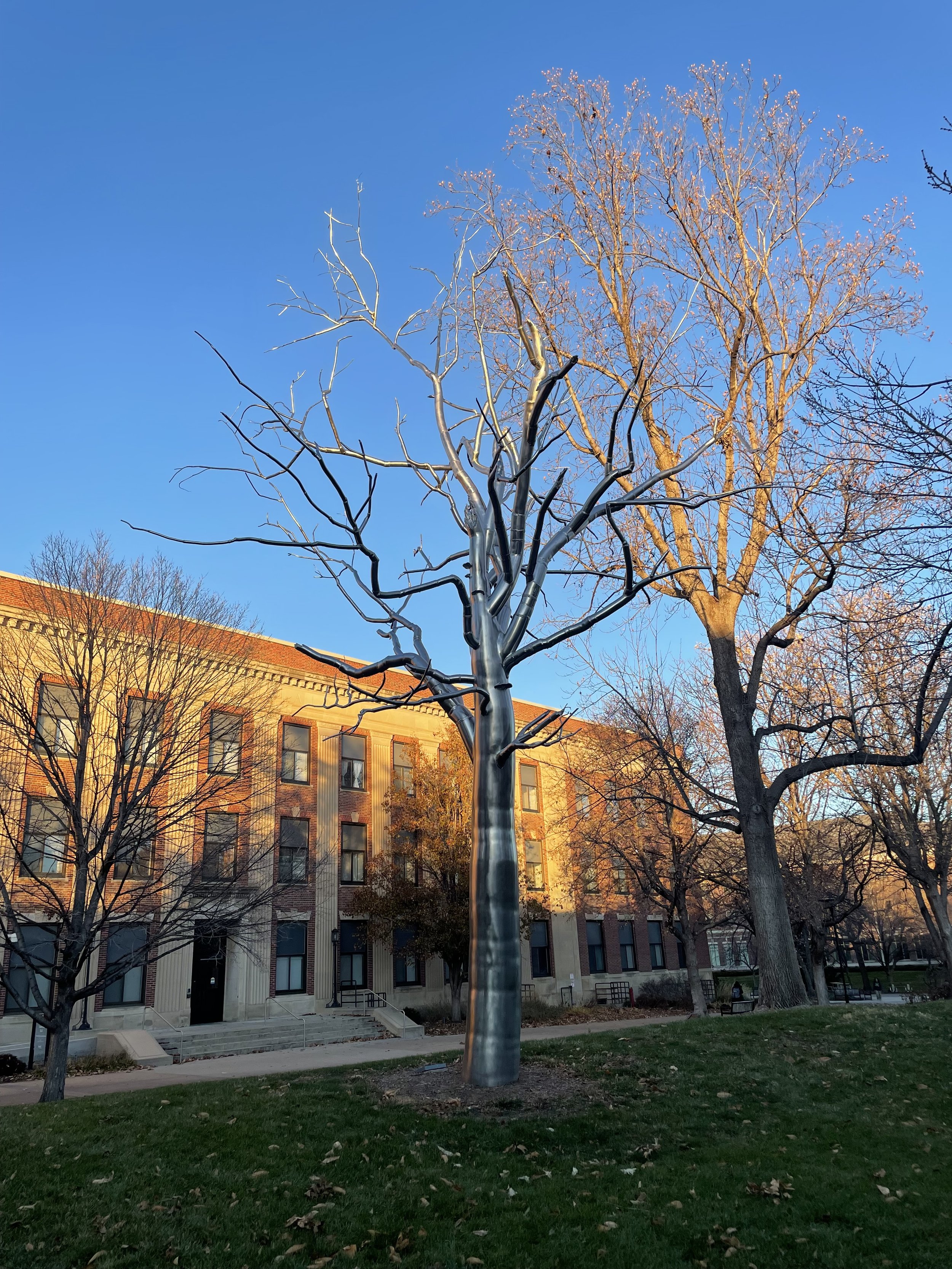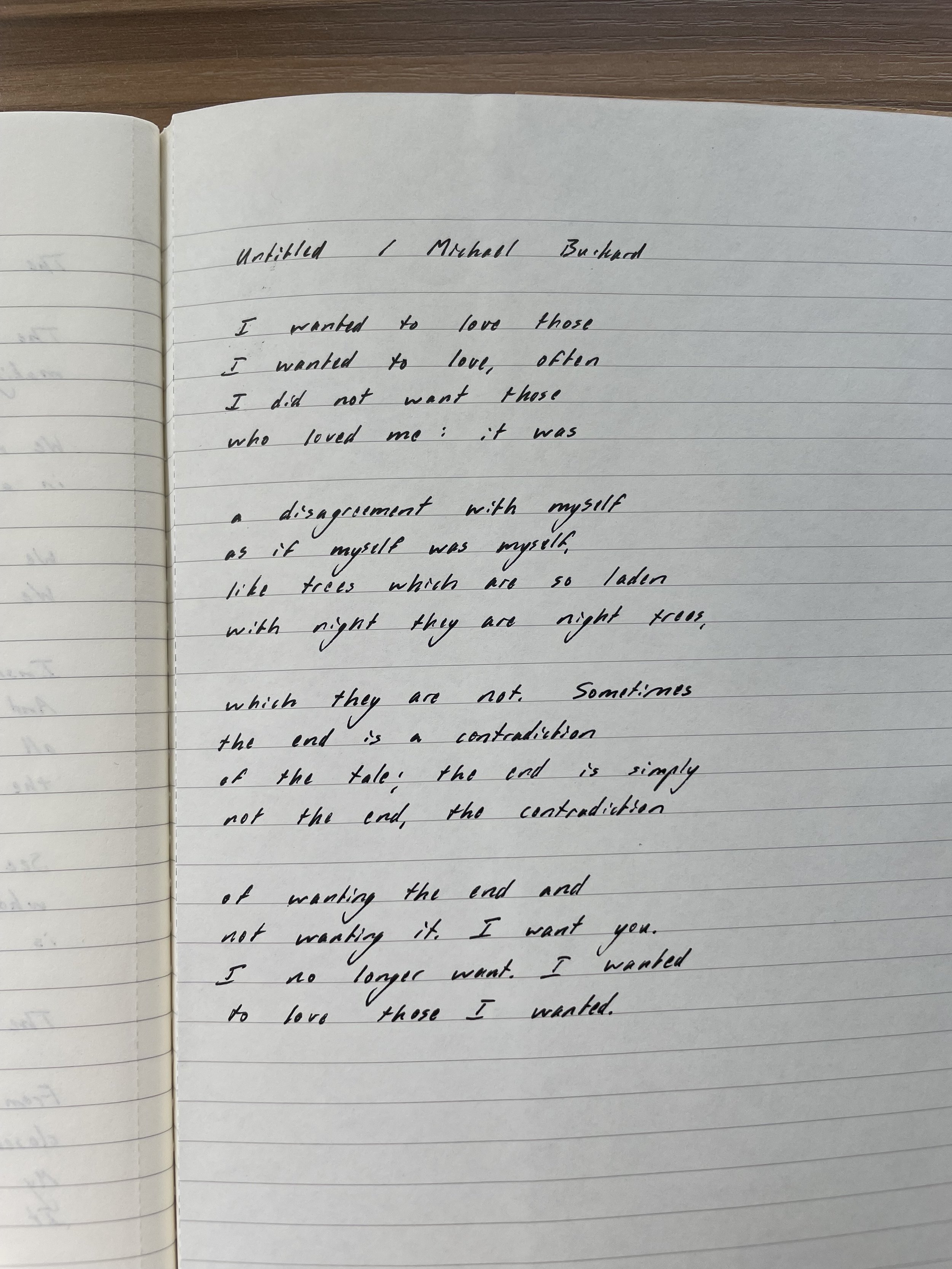When I start writing these notes, it’s at the end of a long semester. The temperature has dropped; the trees in Lincoln are mostly bare now, though some still stubbornly cling to clumps of brown, shriveled leaves. On my walk through campus on the way to work each day, I’ve been watching the squirrels building their winter nests out of those leaves. It’s finals week, and campus is going through yet another shift. The English department building is suddenly quiet without the steady stream of students going to classes. In the library, students are hunched over books and laptops as they finish final papers and study for exams. It makes me think of my own undergraduate semesters—writing papers on Virginia Woolf or Milton, cramming for a Russian test, or anxiously memorizing the dental patterns of lemurs, gibbons, and Old World monkeys for a physical anthropology final.
*
As I jump back into these notes, there are about 1,000 miles between myself and Lincoln. It’s Christmas Eve; I’m at my childhood home in Pennsylvania, where the temperature has warmed, causing fog to fill the small valley where our house sits. Above us, the mountains are encased in fog. My dad keeps checking the webcams at the ski resorts there, hoping that it will clear so he can drive up to burn some energy for a few hours. But the camera images remain a white blur.
*
I don’t know the names for all the different trees and shrubs along the path on my way to school in Nebraska, but I know what they look like as the seasons change. How the one near my building bursts in the spring with tight clusters of white blossoms resembling cake frosting. Nearby, lilac bushes face each other on either side of the walkway; when they bloom in April, I pause to stuff my face in them each time I pass by.
There’s one tree on campus that is in its own category, and that is Roxy Paine’s 40-foot stainless steel tree sculpture, which is nestled among other natural trees beside Andrews Hall. I see it in passing moments now—on my way to get coffee, or to pick up a book from the library. But in my second year here, I had an office that looked out directly onto the tree.
In the summer, the tree’s trunk and limbs merge with the canopy; one must seek it out to know it's there. In winter, the sculpture is starkly radiant one day, glowing against Nebraska's bright-blue sky, and muted and hidden the next, blending in with the bare trees around it. In the fall, red leaves from a nearby tree throw their color against its metal trunk, mimicking firelight. The trunk is thick; the limbs are spidery and reaching. People pass by it every day never seeing it, but once they do, it’s difficult for one’s eyes to not be drawn to it.
The branches of Paine’s tree were constructed in his studio in upstate New York. I learned this after having stared at the tree through my office window for the better part of a year and a half. Paine’s studio and home are in Treadwell, NY—a hamlet in the town of Franklin in Delaware County, not far from Syracuse, where I lived before moving to Nebraska. Google Maps tells me that Treadwell is a one hour and 53 minute drive from Syracuse via I-81 S, which I drove regularly on my way to visit my parents in Pennsylvania.
*
After a semester ends, there is often a relief, for me, in looking up from my books and computer and remembering that, among other things, trees still exist. At the end of the fall semesters, I would usually come home to my parent’s house for the winter break. The house sits along a two-lane highway at the edge of the woods; I can walk into my back yard and climb up into those tree-lined hills, where I will never get lost. Or I can drive a few miles down the highway to the state park, where hiking trails I once worked on cut their way through hills, streams, and waterfalls. Arriving here from a city, the air always feels crisp and clean. I can smell the pine in it clearly.
*
Paine’s work explores interactions between what is natural and what is artificial. Prior to the installation of the UNL tree (titled “Breach”), a news release said of Paine’s work:
[The trees] are placed in contexts where they are at once integral and apart, calling attention to how the surrounding landscapes—while apparently natural—are likewise human interventions. The Sheldon tree, unlike Paine's other trees, will appear scarred, perhaps damaged by lightning or high wind, and suggests the impact of history while retaining a pristine surface. Its placement is important to Paine, who seeks to engage viewers by presenting an unexpected form in association with the objects it mimics.
I have spent six years in the building beside this tree, as a graduate student in English. In my first years in the program, I found myself relating to the tree’s way of blending in, mimicking the trees around it. I thought of myself performing a similar kind of mimicry, having shifted from year-round farm labor to being immersed once more in academia.
Now I am nearing the end of my PhD program and find myself relating to the sculpture in a different way. Silver has gathered in streaks in my hair, matching the trunk and limbs. Like the tree, I’m feeling a little weathered, my branches a little broken. But still standing.
*
Outside the window of my childhood bedroom in Pennsylvania, I see another tree. It’s on our neighbor’s property; I don’t know what species it is, or if it’s alive or dead. But in the cold December rainlight, its limbs appear as silver as the limbs of Roxy Paine’s tree. This is the room where I wrote my first poems. It’s now my mom’s artist studio. There’s something beautiful in that, I think: the two of us, at different points in life, sitting inside this same room and making art.
*
Coming home always sends me into a reflective state, whether I want it to or not. I end up thinking a lot about identity and how it’s shaped by people and place. Many of my friends agree that going home makes them revert, in some way, to a previous version of themselves. With time and distance, I’ve shifted away from the person I was when I started writing poems in this room. But to revisit a place can also be to revisit a self, and when I enter this house, I feel some kind of swap taking place inside my body. Maybe this is also a kind of mimicry. I think it comes from a place of wanting to reassure my loved ones here that I haven’t changed so much that they can’t recognize me. It’s still me, this shadow-self whispers. And there can be delight in revisiting that past self. And it can also feel strange—like a kind of erasure.
*
In the airport on my way back to Lincoln, yet another shift inside myself. Airports make me feel blank, anonymous. With an hour to spare in between flights, I spray perfume at a duty free store, buy a book of poetry at the bookstore (Lindsey Webb’s Plat). At boarding time, I wedge my hips into a too-small window seat and think about how good it will feel to hold my cat, who my neighbor says has been crying at the door when she comes home from work. Clouds and fog cover Lincoln—so thick that I don’t see the ground until we’re just about to land. When it appears, I’m relieved to see the long expanse of a dirt field, a straight dirt road cutting through it. Something unfurls inside my chest. This, too, is home.









